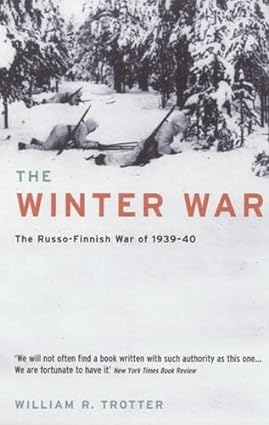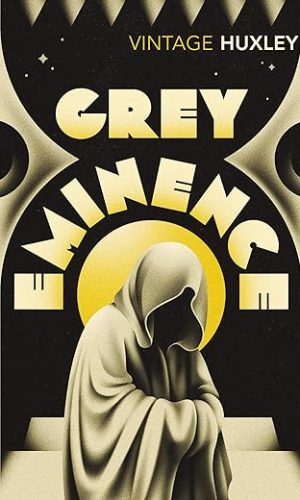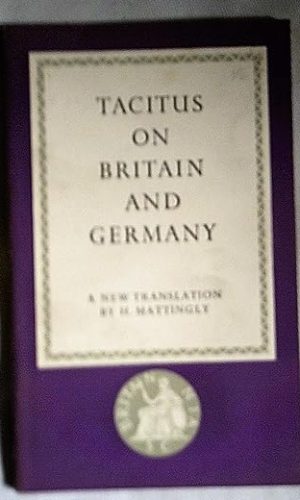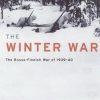The Winter War: The Russo-Finnish War of 1939-40
£9.50
On 30 November 1939, Soviet bombers unloaded their bombs on Helsinki, the capital of Finland. Stalin’s ultimatum, demanding the cession of huge tracts of territory as a buffer zone against Nazi Germany, had been rejected by the Finnish government, and now a small Baltic republic was at war with the giant Soviet military machine. But this forgotten war, fought under brutal, sub-arctic conditions, often with great heroism on both sides, proved one of the most astonishing in military history. Using guerrilla fighters on skis, even reindeer to haul supplies on sleds, heroic single-handed attacks on tanks, and with unfathomable endurance and the charismatic leadership of one of the 20th century’s true military geniuses, Finland not only kept at bay but won an epic, if short-lived, victory over the hapless Russian conscripts. Its surreal engagements included the legendary “Sausage Battle”, when starving Soviet troops who had over-run a Finnish encampment couldn’t resist the cauldrons of hot sausage soup left behind by their opponents – and were ambushed as they stopped to sup. Although by sheer attritional weight of numbers Stalin eventually prevailed over the Finns, their pointed resistance enabled their country to remain free, even as other countries fell one by one.
Read more
Additional information
| Publisher | Aurum Press Ltd (8 Aug. 2013) |
|---|---|
| Language | English |
| Paperback | 287 pages |
| ISBN-10 | 1781312265 |
| ISBN-13 | 978-1781312261 |
| Dimensions | 19.7 x 2.1 x 13 cm |










by T. Brown
sometimes I find it a bit hit and miss buying a history book. I wanted to read about finns during ww2 and chose this book, and I am very glad that I did.
It is written in a very well structured way, introducing people and places when they need to be introduced, and it gives a great mind set of the finnish and Russian attitudes of this war. The maps and photographs are handy although the maps could have been a bit more detailed, as the text refers to places that aren’t shown on the maps.
Overall I would say if it is the winter war you want to learn about then their is going to be something for you in this book, whether it is politics, military strategy, heroism, action or just daily life.
by Paddy
Git curious about this because of possible parallels to the Putin war on Ukraine. Little did I have any idea of quite how far History has repeated itself. Sometimes I felt it got a bit bogged down on the fine detail of different phases of battle, but there was enough about the generalities of combat in the far north and the political and diplomatic chicanery to keep me interested. A good read well written.
by David E
A very well written and informative book on this relatively short war between Finland and the Soviet Union. The overlapping issues with both Norway, Germany, Britain and France are very well explained and the thought that Britain could have been at war with both Germany and the Soviet Union at the same time was a very sobering one. Worth a read.
by JoeyF74
I cannot put this book down – started yesterday morning, it has just gone midnight & im going to stay up to finish it. I’ve never read anything about military history before, but this is clearly written, easy to read without jargon, sometimes with humorous anecdotes. There could be a few more maps, and as one of the other reviewers said, some of the maps are missing place names which are mentioned in the text. I wish there was a bibliography at the end but the author does admit it would be pretty useless to anybody who doesn’t speak Finnish.
I am a Finn but haven’t lived there since childhood so missed this bit of my country’s history at school. It has some personal resonance for me, I even saw my grandmother’s birth village in Karelia mentioned. It really is a remarkable, rousing story.
by Ed
Of the thousands (Literally!!) of “War Books” I have read in my 65 years this work would be in the top 5. Mr. Trotter’s research, analysis amd use of sources is superb. That basis is further enhanced by a writing style which conveys the flow of events as well as the complex and sometimes bizarre personalities involved in this war which never should have happened. He brought to life the Finns as a nation and as truly remarkable
citizen/soldiers.
I collect rifles of that conflict and ended up re-oiling several of them after a night’s reading! The Finns took leftover Tsarist Mosin-Nagant Model 1891 rifles and turned them into target grade rifles, continuing to do so until 1970. Their adaptive reuse of almost anything anyone could give them,
voluntarily of by surrender still amazes me. Mr. Trotter brings all of this to life.
A truly great addition to any library!
by unbiased?
A wonderful read, that as others have said required rationing other wise it would have been read in a day. Has similarities to that of Beevor with personal stories of heroism thrown into an overall narrative. The use of two chapters at the start of the book to explain the political events leading to the war and the personality of Mannerheim allows for a greater understanding of the events throughout. This book is of particular use as it requires little knowledge of Finland before reading. The maps are not of the clearest nature nut are of some use and do not impede the overall flow of the book. All told this book is for anyone who enjoys a good tale of heroism on both a personal and national level.
by Rob Kitchin
William Trotter’s book provides a detailed and engaging account of the Winter War. It is well written and structured, providing good contextualisation as to the path to war, the roles of key actors and events, detailed accounts of the various battles and how they fitted into the wider war, and gives a good overview from both Finnish and Soviet perspectives. Personally, I would have liked a bit more information about post-conflict events, especially the subsequent war with the Soviets 18 months later and the final resolution at the Second World War’s end. Nonetheless, a very readable and informative account of the Winter War.
by Billt1412
This is clearly a very well researched book and has been written in a chronological and geographical order, which makes it perfect to follow and easy to read, especially considering this is not a very well known conflict.
It highlights another era in the history of Britain that we should not be proud of due to disgraceful political decisions made. The book, although small, covers the important historical build up, the main characters, the conflict, the political repercussions and the cowardly decisions made by the allies so as not to upset Stalin. The Finns, after the initial shock show their bravery and commitment throughout. Certain leaders showed a very impressive tactical ability which aided by the soldiers fighting spirit not only gave the Russians a scare but actually beat a vastly bigger army in a number of battles. These details and the strategies behind them are all well presented and if you intend to read this for an historical perspective, a military one or just to learn then you will not be disappointed.
Finland is owed an apology by the allies which it will never get but their soldiers and people who got through this should never be forgotten – this short conflict is up there with The Alamo and Rorkes Drift. A truly informative read.